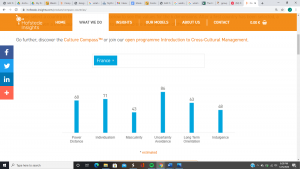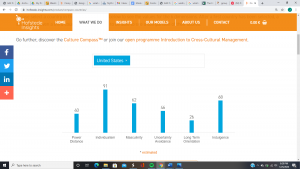Artifact 5:
- Write five happy episodes or situations which you have experienced in the past.
(1) I bought my first car a year ago.
(2) Last Christmas, I was able to give back to the community by volunteering to pass out meals and toiletries.
(3) I recently received a job offer paying the highest I have ever made.
(4) My last birthday was celebrated at the house surrounded by family.
(5) I spent the 4th of July with my sisters.
- Look at your responses again. Which episodes or situations do you think are associated with “socially disengaged emotions”? Which episodes or situations do you think are associated with “socially engaged emotions”? Write the numbers of the episodes.
(a) Socially disengaged emotions: 1,3
(b) Socially engaged emotions: 2,4,5
Artifact Takeaway:
This artifact allowed me to understand the differences in which emotions are classified. There are emotions that influence interpersonal relationships, and those that influence intrapersonal relationships. My results showed that my most recent experiences of happiness have stemmed from emotions shown interpersonally.
“Social Engagement”
https://www.nicepng.com/ourpic/u2w7q8i1u2y3e6u2_friends-and-family-png-hanging-out-with-friends/
I chose this image because it represents the act of engaging with others, and I have had more happy situations when I have engaged with others in the past.
Artifact 4:
What makes you happy? Do you think that at different times of your life, different things made you happy? Do you think your happiness relates to better physical health? Or do you think better physical health leads to your happiness?
Simple things for the most part make me happy. Waking up and seeing the sunrise makes me happy. Driving with my favorite music on makes me happy. Cooking a new meal makes me happy. Going to a job every morning that I like makes me happy. Spending time with my boyfriend makes me happy. Now that I am a little older, just being alive and enjoying the moment gives me great satisfaction. When I was in my teens, I always looked forward to purchasing new clothes and shoes to make me happy and while I still do enjoy those things, it does not define my happiness. I think happiness relates to better physical and mental health. The happier you are, the better you will feel. I also believe however, if physically and mentally you are not at your best, then you will not feel as happy.
Artifact Takeaway:
This artifact allowed me to shed light on what truly makes me happy, and question if those same things in return provide me with a better physical health. I realize that when I am engaging in those activities above, I feel my absolute best both physically and mentally.

https://www.pinterest.com/pin/427279083368976812/
“The Simple Things”
I chose this image because it represents one of the things that makes me happy, trying out new recipes.
Artifact 3:
| Target Person | Minutes |
| Your parent | 30 |
| Your older sibling | 30 |
| Your boyfriend or girlfriend | 30 |
| Your best friend | 30 |
| Your colleague | 15 |
| Your client | 15 |
| Your boss | 20 |
Did you find any differences in the results?
Yes
If you said “yes” in the previous question, who will you wait for the longest time and who will you wait for the shortest time? Why?
I found that I would wait for family members and my significant other longer than I would for colleagues, clients, and bosses. I assume that since I am closer to the former that maybe they had something come up in which they could not meet on time. For the latter, if I have to wait longer I assume that they are not very interested in meeting with me since I am not close enough to them to know exactly why they would keep me waiting.
Artifact Takeaway:
I learned in this artifact how people choose to spend their time varies with culture. I was asked to consider 7 target people, and how long I would ever wait on them. My results showed that I would wait on my family members and significant other longer because I feel more connected to them and would understand their reasons for being late. I would not be able to say the same for my colleague, client, or boss. Someone of a different culture who spends their time differently may not have similar results.

tosavealife.com/faith/inspiration/15-waiting-memes-that-even-the-most-patient-person-can-relate-to/
“Still Waiting…..”
Since this artifact focused on how cultures may differ in terms of time, I chose this picture in a comedic manner to describe how long I usually wait for my family members and significant other.
Artifact 2:
Look at your country’s scores on the five cultural dimensions. How do those scores compare to scores from other countries? How do those comparisons compare to your experiences with people from other cultures?
On the cultural dimension of power distance, the United States scores a 40. This is defined as the extent to which individuals of a society normalize that power is distributed unequally. In comparison to other cultures, this score is one of the lowest.
In terms of uncertainty avoidance, the United States scores a 46. This term is the tolerance of accepting that the future is uncertain. This score also ranks to be low in comparison to other cultures. For instance, France’s uncertainty avoidance is 86 and Greece is 112.
The United States scores a 91 in individualism/collectivism. Individualism indicates the greater importance on personal achievements, while collectivism focuses on the group’s goals. This score shows to be the highest in the category.
On the cultural dimension of masculinity/feminity, the U.S scores a 62. Masculinity represents achievement, assertiveness, and heroism. Feminity represents cooperation and caring for others. This score is high in comparison to other countries, except Japan whose score is 95.
In long-term short orientation, the U.S scores a 29. Long-term orientation is the focus on the future, short-term orientation is the focus on the present. While Pakistan scores a 0, and West Africa scores a 16, this is still a low number for the U.S.
Compare your country to a country that you would like to visit
The United States rates on the following value dimensions of power, individualism, masculinity, uncertainty avoidance, long term orientation, and indulgence respectively: 40,91,62, 46,26, 68. France rates on the same value dimensions respectively, 68, 71, 43,86,63, and 48. According to this information, residents of the U.S value individual power, individualism, masculinity, and indulge quite often in comparison to France. The U.S, however, does not value uncertainty or thinking long-term as much as France.
Artifact Takeaway:
This artifact allowed me to see numerically how our culture lines up with other cultures around the world in terms of power, individualism, masculinity, uncertainty avoidance, and long term orientation. I was not surprised to see the United States with a score of 91 for individualism as it is something that is very common in this culture. However, I was surprised to see the masculinity/feminity value at a score of only 62.


“US vs France”
These images were chosen to compare the differences in value dimensions between both the United States and France.
Artifact 1:
Do you find any similarities or differences in the colors listed below? First, categorize the following 12 colors into groups, and state the rationale of your categorization.
Black, Blue, Brown, Gray, Green, Orange, Pink, Purple, Red, Violet, White, Yellow
Category 1: Black, Gray, Purple, and Violet
Rationale: Colors are pretty dark and represent a dull, depressed or neutral mood.
Category 2: Orange, Yellow, White, Pink,
Rationale: Usually represent a happier atmosphere
Category 3: Red, Blue, Green, Brown
Rationale: These three colors are symbolized often. Red often means danger, pain or stop. Blue often represents calmness, water, and skies. Green often represents money and land. Brown often symbolizes Earth and safety.
Write emotion words which you will associate with each of the following colors.
- Black: Depressed 7. Pink: Happiness
- Blue: Calm 8. Purple: Neutral
- Brown: Sad 9. Red: Pain
- Gray: Depressed 10. Violet: Neutral
- Green: Tranquility 11. White: Happiness
- Orange: Happiness 12. Yellow: Happiness
Did you find any association between your categorization in (1) and the results of (2)?
Yes. The same emotion words that represent colors for 2 all fit into appropriate categories from 1.
Artifact Takeaway:
I chose this artifact as my favorite one because it surprised me the most to know that cultures also vary in how they represent colors. I figured it was universal that red often symbolized pain, while yellow symbolized happiness. However, in Russia for instance, yellow can represent envy.
:max_bytes(150000):strip_icc():format(webp)/yellow-2795823-7cb885a95abd4e6a9bba2890d2dfd76e.png)
https://www.verywellmind.com/the-color-psychology-of-yellow-2795823
“Colors in Culture”
I chose this image because colors such as blue often mean different things in different cultures. While I look at blue as representing a calm atmosphere, someone from a different culture may see blue as a color representing sadness.